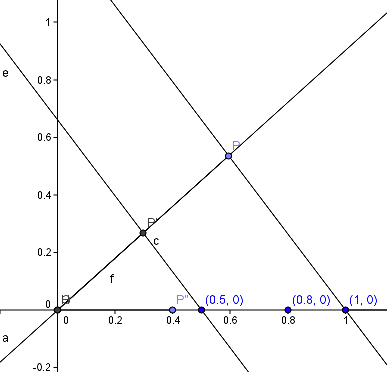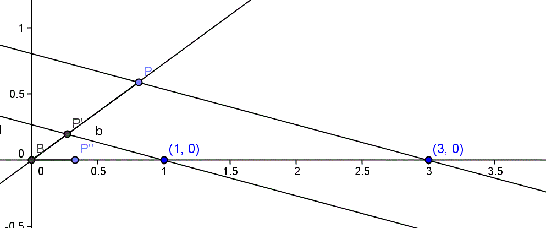The operations defined for rational numbers can be extended for real numbers.
To introduce the operations for real numbers we need some previous concepts.
An irrational number is formed by a sequence of digits. These digits define successive approximations of the number.
For number $$\sqrt{2}$$ the approximations are:
$$1,4$$
$$1,41$$
$$1,414$$
$$1,4142$$
$$1,41421$$
$$\ldots$$
For number $$\pi$$ the approximations are:
$$3,1$$
$$3,14$$
$$3,141$$
$$3,1415$$
$$3,14159$$
$$\ldots$$
To calculate the operation between two real numbers we use the successive approximations. By computing with the two approximations we obtain the digits of the result.
In order to add $$\sqrt{2}$$ and $$\pi$$, we approximate it by truncating rationals:
$$1,4+3,1=4,5$$
$$1,41+3,14=4,55$$
$$1,414+3,141=4,555$$
$$1,4142+3,1415=4,5557$$
$$1,41421+3,14159=4,55580$$
$$\ldots$$
If we use a calculator, we will get the following result $$\sqrt{2} + \pi = 4,55580621596\ldots$$
For the subtraction of $$\sqrt{2}$$ and $$\pi$$, we use a similar procedure:
$$1,4-3,1=-1,7$$
$$1,41-3,14=-1,73$$
$$1,414-3,141=-1,727$$
$$1,4142-3,1415=-1,7273$$
$$1,41421-3,14159=-1,72738$$
$$\ldots$$
If we use a calculator, we obtain that $$\sqrt{2} - \pi = -1,72737909121\ldots$$, this value is similar to the our difference of truncated rationals
For the product of $$\sqrt{2}$$ and $$\pi$$:
$$1,4 \cdot 3,1=4,34$$
$$1,41 \cdot 3,14=4,4274$$
$$1,414 \cdot 3,141=4,441374$$
$$1,4142 \cdot 3,1415=4,4427093$$
$$1,41421 \cdot 3,14159=4,44286799$$
$$\ldots$$
If we use a calculator, we obtain the following result $$\sqrt{2} \cdot \pi = 4,442882938\ldots$$ which corresponds to the value obtained by the product of truncated rationals.
Finally, we use the same procedure for the quotient of $$\sqrt{2}$$ and $$\pi$$:
$$1,4 / 3,1=0,451612903$$
$$1,41 / 3,14=0,449044586$$
$$1,414 / 3,141=0,450175103$$
$$1,4142 / 3,1415=0,450167118$$
$$1,41421 / 3,14159=0,450157404$$
$$\ldots$$
Using the calculatator
$$\sqrt{2} / \pi = 0,4501581580785\ldots$$
And we observe that the value we obtain gets close to the real one.
Addition of real numbers
Given any two real numbers $$a$$ and $$b$$ we call their addition $$a+b$$.
The point for number $$a+b$$ is obtained by moving the length of the segment $$\overline{0b}$$ from the point corresponding to $$a$$, to the right if $$b$$ is positive and to the left if $$b$$ is negative.
Properties of the sum
-
Associative Property: given any three real numbers $$a,b$$ and $$c$$, it is satisfied that: $$$a+(b+c)=(a+b)+c$$$ so, when we add three different real numbers, no matter which are first. If we add the two first ones and we add then the third one, we get the same result if we first add the two last and then we add the first one to the result.
-
Commutative Property: For any pair of real numbers $$a$$ and $$b$$ it is satisfied that: $$$a+b=b+a$$$ in other words, the order of the addends does not alter the result.
-
Neutral Element: There exists a real number, $$0$$ which, when added to any other real number $$a$$, results in $$a$$: $$$a+0=a$$$
- Opposite Element: for any real number $$a$$ there is another real number $$-a$$. Their addition results in the neutral $$0$$. We call $$-a$$ the opposite element of $$a$$. Graphically it is the symmetrical point of $$a$$ in relation to $$0$$.
All these properties can be summed up by saying that the set $$\mathbb{R}$$ is a commutative group or Abelian group with the addition operation.
Let's remark that subtracting a real number from another is to add its opposite: $$a-b=a+(-b).$$
Product of real numbers
If $$a$$ and $$b$$ are two real numbers, we designate its product as $$a \cdot b$$.
We can draw the product between two numbers $$a$$ and $$b$$ by using Thales' theorem.
We start by placing on the real straight line the numbers $$a$$ and $$b$$, as well as the unit.
We draw an auxiliary straight line that goes through the point $$0$$, and we place the length $$\overline{0b}$$, $$0$$ being the initial position, obtaining a point that we will call $$P$$.
We join, now, the points $$P$$ and $$1$$ with a straight line, and we draw a parallel line that goes through the point $$a$$. The mentioned parallel line will cross the auxiliary straight line at a point we call $$P'$$.
The length of the segment $$\overline{0P'}$$ is exactly $$a\cdot b$$.
In fact, using the Thales' theorem we get that:
$$\dfrac{\overline{01}}{\overline{0a}}=\dfrac{\overline{0P}}{\overline{0P'}} \Rightarrow \overline{01}\cdot \overline{0P'}=\overline{0a}\cdot \overline{0P}$$
But since we have that $$\overline{0a}=a, \overline{0P}=b$$ and $$\overline{01}=1$$, then:
$$\overline{01}\cdot \overline{0P'} = \overline{0a}\cdot \overline{0P} \Rightarrow 1 \cdot \overline{0P'}=a\cdot b \Rightarrow \overline{0P'}=a\cdot b$$
So, translating the length $$\overline{0P'}$$ on the straight line, $$0$$ being the beginning, we will get the point which corresponds to the number $$a\cdot b$$.
To multiply graphically numbers $$0,8$$ and $$0,5$$ we must draw them on the real straight line, as well as number $$1$$.
We draw an auxiliary straight line that passes through point $$0$$ and we mark point $$P$$ on it.
We draw the parallel to $$\overline{1P}$$ crossing $$0,5$$ calling this point as $$P'$$.
Translating the distance $$\overline{0P'}$$ to the real straight line we find the point corresponding to $$0,8\cdot 0,5=0,4=P''$$.

Properties of the product
-
Associative Property: given any three real numbers $$a,b$$ and $$c$$, it is satisfied that: $$$a\cdot(b\cdot c)=(a \cdot b) \cdot c$$$ in other words, when we multiply three different real numbers, no matter which is the first multiplied: if we multiply the two first and we then multiply the result by the third number we will get the same result as if we multiply the two last and then we multiply the result by the first number.
-
Commutative Property: For any pair of real numbers $$a$$ and $$b$$ it is satisfied that: $$$a \cdot b=b \cdot a$$$ so, the order of the factors does not alter the product.
-
Unit element: a real number $$1$$, exists which, being multiplied by any other real number $$a$$, results in $$a$$ $$$1 \cdot a=a$$$
- Inverse Element: for any real number $$a$$ another real number exists, which we call $$a^{-1}$$, or $$\dfrac{1}{a}$$, that when multiplied results in the unit $$1$$. We call $$a^{-1}$$ the inverse element of $$a$$.
All these properties also define theset of real numbersas an Abelian group with the operation product.
To draw the inverse of $$a$$ we have to place $$a, 1$$ and $$0$$ on the real straight line.
We draw an auxiliary straight line that crosses point $$0$$, and place there, from $$0$$ a segment length $$1$$.
$$P$$ will be the extreme of such segment.
We join $$P$$ with $$a$$ and we draw a parallel to $$\overline{aP}$$ which crosses at $$1$$, finding point $$P'$$.
The segment $$\overline{0P'}$$ has length $$a^{-1}$$.
Indeed, using the Thales' theorem we find out that:
$$\dfrac{\overline{01}}{\overline{0a}}=\dfrac{\overline{0P'}}{\overline{0P}}$$ But, we have $$\overline{0P}=\overline{01}=1$$ and $$\overline{0a}=a$$, so:
$$\dfrac{\overline{0P'}}{1}=\dfrac{1}{a} \Rightarrow \overline{0P'}=\dfrac{1}{a}=a^{-1}$$
So that to find point $$a^{-1}$we have to translate segment $$\overline{0P'}$$ on the real straight line.
To draw the inverse number of $$3, 3^{-1}=\dfrac{1}{3}$$, we draw on the straight line the points $$3, 1$$ and $$0$$:
Now we place on an auxiliary straight line a point $$P$$ by moving the segment $$\overline{01}$$.
We draw the straight line that joins point $$P$$ with point $$3$$, and a paralel that crosses point $$1$$. We will have, then, point $$P'$$ placed on the auxiliary straight line.
Once we have done this, we will be able to translate the point $$P'$$ to the real straight line, obtaining point $$P''=3^{-1}$$.

We have to point out that all these properties define the set $$\mathbb{R}$$ as an Abelian group with the multiplication operation.
Furthermore, we can also observe that dividing a real number by another, consists of multiplying it by its inverse:
$$\dfrac{a}{b}=a\cdot\dfrac{1}{b}=a\cdot b^{-1}$$
There also exists a last property related to the sum and the product of real numbers:
- Distributive property of the product regarding the sum: given any three real numbers $$a,b$$ and $$c$$, it is satisfied that: $$$a\cdot (b+c)=a\cdot b + a \cdot c$$$ This property, together with all those of the sum and the ones of the product, define $$\mathbb{R}$$ as a structure that we name commutative set with a unit.
